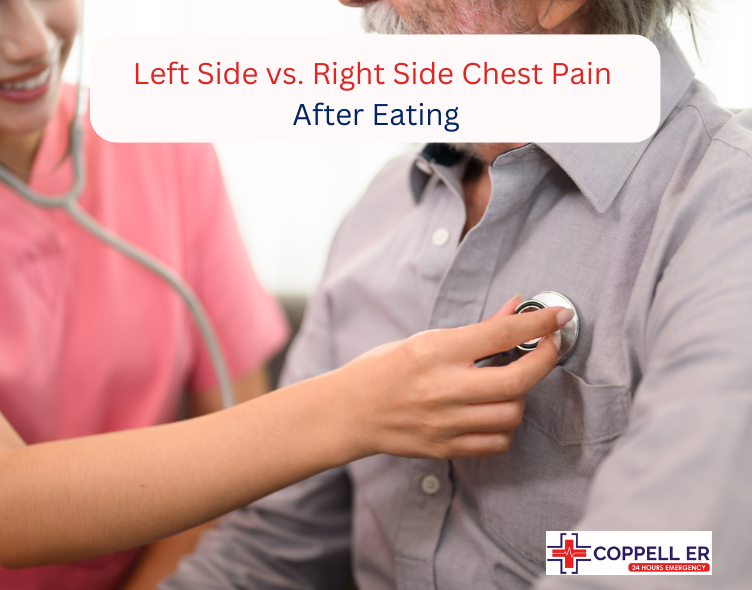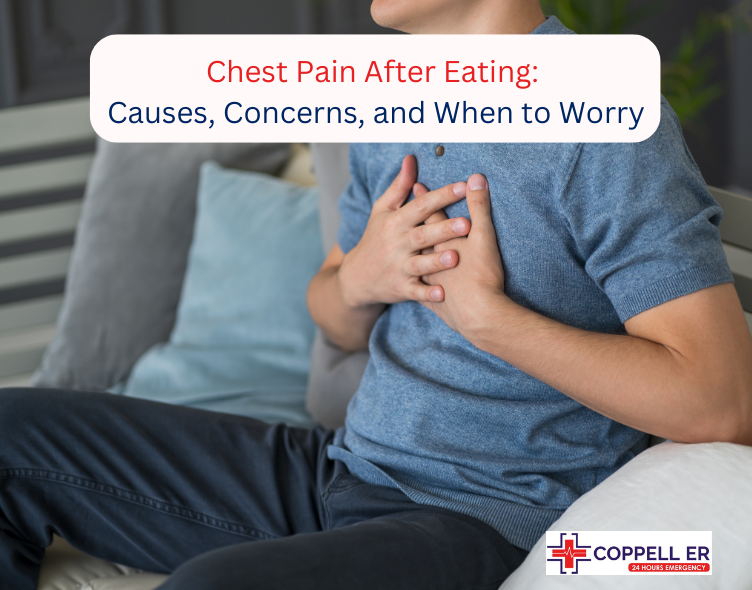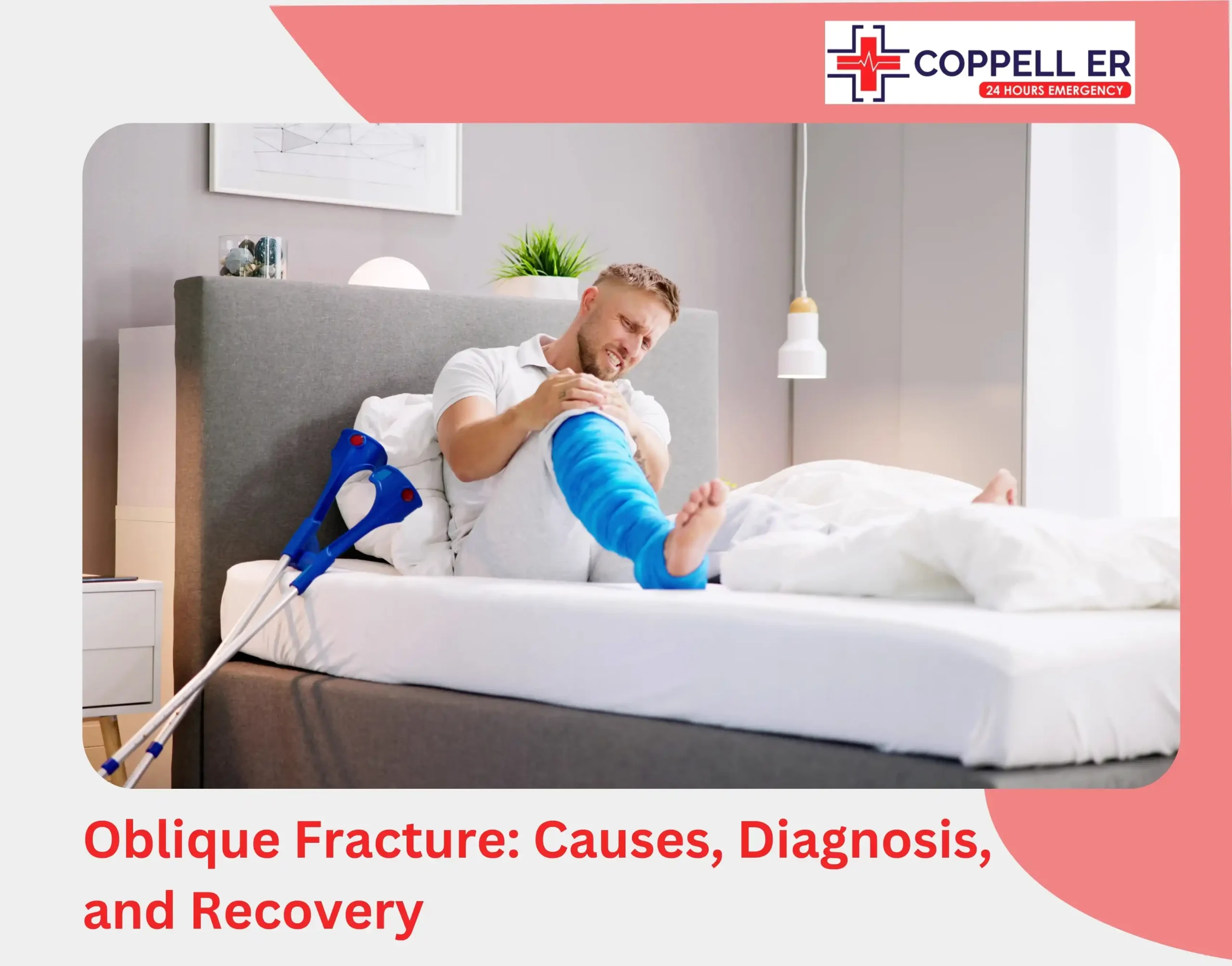Ever felt your chest tighten or burn after a meal? This alarming sensation can transform a satisfying dining experience into a source of anxiety and confusion.
While often linked to digestive issues, chest pain after eating can sometimes signal more complex conditions. From your esophagus to your heart, multiple culprits could be behind this unsettling sensation.
So, what’s really causing your chest discomfort after eating and when should you seek emergency help? Let’s find out.
5 Causes of Chest Pain After Eating

While chest pain can mimic cardiac issues like angina or heart attack, many cases of post-meal chest pain stem from digestive or non-cardiac conditions. Here are the common culprits:
Acid Reflux/GERD
Gastroesophageal reflux disease (GERD) or acid reflux occurs when stomach acid flows back into the esophagus, irritating its lining. This can cause a burning sensation or sharp pain in the chest. This discomfort doesn’t always present as typical heartburn, leading to confusion about its origin.
Gallbladder Issues
Gallbladder problems, particularly gallstones, can lead to severe discomfort, especially chest pain after eating fatty foods. The gallbladder aids in fat digestion, and when there are issues like gallstones, it can cause pain on the right side of the abdomen that radiates to the chest. Fatty meals are a common trigger because they require more bile to break down, putting stress on the gallbladder.
Esophageal Disorders
Conditions like esophagitis or esophageal spasms can cause intense, squeezing chest pain after eating. Esophagitis is inflammation of the esophagus lining, often due to acid reflux, while esophageal spasms involve abnormal muscle contractions in the esophagus. These disorders are often mistaken for heart-related issues due to their severity.
Peptic Ulcer
Peptic ulcers are open sores in the stomach or upper small intestine lining. While they are more commonly associated with abdominal pain, peptic ulcers can cause discomfort that radiates to the chest, especially after eating. While typically associated with abdominal pain, eating can sometimes trigger or worsen chest pain in ulcer patients.
Heart-Related Causes
Heart conditions, such as angina, can be triggered by eating, particularly large meals that place additional stress on the heart. Angina occurs when the heart doesn’t receive enough oxygen-rich blood, leading to chest pain. If the pain is accompanied by other symptoms like shortness of breath, sweating, dizziness, or radiates to the arm, neck, or jaw, it could indicate a heart attack.
Additional factors such as anxiety, muscle strain, or food allergies can also contribute to chest pain after eating. Anxiety can manifest physically, leading to chest tightness after eating, while muscle strain from physical exertion can cause temporary discomfort in the chest.
Left Side vs. Right Side Chest Pain After Eating

The location of pain in chest after eating can provide valuable insights into its origin. Left side chest pain after eating often raises concerns about cardiac issues, but it can also result from acid reflux or peptic ulcers.
Conversely, right side chest hurts after eating frequently points to gallbladder problems, particularly after consuming fatty foods.
However, it’s important to remember that pain patterns can vary and there can be exceptions. While understanding the pain’s nature and its location can help pinpoint the underlying cause, it should always be considered along with other symptoms and risk factors for accurate treatment.
Red Flags: When to Worry About Post-Meal Chest Pain
While many causes of chest pain after eating are harmless, the following requires immediate medical attention:
Heart Attack Warning Signs
Severe, persistent pain lasting more than a few minutes, especially when accompanied by shortness of breath, pain radiating to arms or jaw, dizziness, nausea, or cold sweats, requires emergency medical care. Learning to distinguish between chest pain and heart attack can be life saving.
Persistent or Worsening Symptoms
If the discomfort persists or worsens over time, it could signal an underlying issue that requires urgent medical intervention.
Associated Symptoms
Certain symptoms paired with chest pain, such as trouble breathing, a feeling of faintness, or a rapid heartbeat, should not be ignored. These symptoms can indicate more serious conditions like a heart attack, gallbladder disease, or severe acid reflux complications.
Diagnosis and Treatment of Chest Pain After Eating

Diagnostic Tests
To determine the causes of chest pain after eating, doctors may recommend various diagnostic tests, such as an endoscopy to examine the esophagus and stomach, blood tests to check for infection or inflammation, or imaging studies like an ultrasound or X-ray. These tests help identify the root of the issue, whether it’s digestive, heart-related, or otherwise.
Treatment Options
- For Acid Reflux/GERD: Medications such as antacids, proton pump inhibitors, and H2 blockers are often prescribed to reduce stomach acid.
- For Gallbladder Issues: Treatment may involve medication to dissolve gallstones or, in more severe cases, surgery to remove the gallbladder.
- For Heart-Related Causes: Lifestyle changes, medications (beta-blockers or nitroglycerin), or surgical procedures to restore proper blood flow to the heart.
- For Other Causes: Tailored treatments such as muscle relaxants for esophageal spasms, dietary adjustments for food allergies, or anxiety management techniques for stress-related chest pain.
Preventing Chest Pain After Eating
- Eat smaller, more frequent meals to avoid overloading the digestive system.
- Chew food thoroughly and eat slowly to aid proper digestion.
- Avoid lying down immediately after eating; stay upright for at least 30 minutes.
- Limit or avoid fatty, spicy, and acidic foods, as well as caffeine and alcohol, which can trigger chest pain.
- Stay hydrated and include more fiber-rich foods in your diet to support digestion.
- Maintain a healthy weight to reduce pressure on the digestive system.
- Manage stress through exercise, relaxation techniques, or mindfulness practices.
When to Rush to the ER for Post-Meal Chest Pain
While occasional discomfort may be benign, persistent, worsening, or chest pain accompanied by specific symptoms demands prompt attention. When in doubt, it’s best to seek professional medical advice.
For swift evaluation of your chest pain after meals, our ER of Coppell stands 24/7, with expert medical staff and cutting-edge technology. We’re dedicated to addressing your concerns quickly and providing tailored care for your well-being.
Request an Appointment for Chest Pain Now
FAQs
How Do I Stop Chest Tightness After Eating?
Chest tightness after eating can often be eased with simple changes, depending on the cause. Try these steps:
- Eat smaller, slower meals to avoid overloading your stomach or swallowing air.
- Stay upright for 30-60 minutes after eating to prevent acid reflux.
- Avoid triggers like spicy, fatty, or acidic foods—track what sets it off for you.
- Use remedies like antacids (e.g., Tums) for reflux or simethicone (e.g., Gas-X) for gas.
- Move gently after meals, like a short walk, to release trapped gas.
- Relax with deep breathing if stress is a factor.
When Is Chest Pain After Eating Not Heartburn?
If your chest pain after eating doesn’t feel like the burning of heartburn, other causes might be at play:
- Esophageal Spasms: Sudden, intense muscle contractions in your esophagus can cause squeezing pain during or after eating.
- Gallbladder Issues: Gallstones or inflammation can trigger chest discomfort, especially after fatty meals, often radiating from the right side.
- Gas or Bloating: Overeating or trapped gas can press on your chest, feeling tight or achy rather than burning.
- Peptic Ulcers: Sores in your stomach or intestine might cause pain that radiates upward, worsened by certain foods.
- Heart-Related (Angina): Large meals can strain the heart in at-risk individuals, causing a heavy, non-burning pain.
How to Relieve Trapped Air in the Chest?
To relieve trapped air in the chest, try gently stretching or walking around. Drinking warm water or moving in a seated position can also help release the trapped air.
How Long Does GERD Chest Pain Last?
GERD chest pain typically lasts from a few minutes to several hours. It often occurs after eating and may persist until the digestive process is complete.




